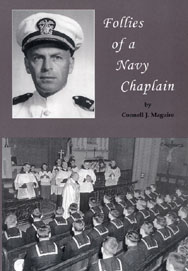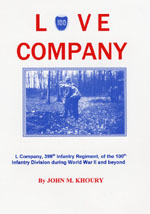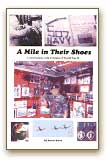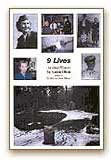©2014, John M. Khoury
Chapter 13
The Clock Turns Back
We stayed a few days in St. Remy and spent some time talking with the townspeople. There were no young men there. We saw some children, some older men and a few women, both young and old.
Hound Dog (Pfc. John H. Bolin, Jr.) said that he remembered his father saying that he had been in a town called St. Remy during World War I. He and other doughboys had carved their initials in the ceiling beam of a farmhouse. It sounded sort of fantastic, but as the semiofficial interpreter of the platoon, I thought that it wouldn't hurt to ask someone, "Were there American soldiers in St. Remy during the first World War?"
One farmer became very excited when asked about it. He said, "Yes! American soldiers were here in World War I." They had even stayed in his house. He led us into his home which was divided on one side as a barn for his animals. On the other side, that was partitioned for the family, he pointed to a wooden beam about eight inches by eight inches thick with initials carved in it. The room was dimly lit, and the beam was dark brown with age and dirt. The ceiling was only about seven feet high. Hound Dog searched for his father's initials, but it was difficult to see anything even if they were there. Suddenly, he shouted, "There they are! Just the way my Dad said they would be." Then we all saw the initials: "JHB" carved exactly the way Hound Dog had described them.
Not only did Bolin come to the same town and the same house, but he was also carrying a BAR just as his father had 26 years before. It was hard to believe such a story, that a father and son would live and relive the same experience in the same place a quarter of a century apart. Most listeners would scoff at it, but the house and the initials are still there, since 1918.
In reality, this was not World War I and World War II. It was still the "Great War" as it was originally called. The 20 year intermission, 1919 to 1939, was used for the development and improvement of the weapons of war. The result was devastation beyond imagination.
Anyway, the moment called for a celebration and the farmer offered some wine, which his pretty, young daughter brought to us. I thought that it would be fun to tell the girl that Hound Dog had fallen madly in love with her and would like to marry her after the war. She said that she might be interested, but he was too old. When I asked her, "How old do you think he is?" She replied, "Thirty-five." Actually, Bolin was 18, about six and a half feet tall, unshaven, dirty, and hollow-eyed and looked beat, just like all of us. The budding romance never developed because, unfortunately, it was time to move out.
We headed into the woods, parallel to the road, to avoid enemy artillery spotters. It was uneventful except for the usual sounds of artillery and occasional small arms fire. As we passed through, I noticed an extended depression in front of us. It was about 10 or 12 feet wide and sloped down about two feet deep and then sloped up again to the other side. It was not an old dried out river bed. It was a World War I trench whose sides had collapsed and time had partially filled in. I thought I could hear the machine guns and cannons and dying moans of that time, but I was hearing the sounds of my time.
(If you would like to order an autographed copy of "Love Company," please contact the author, John M. Khoury)







